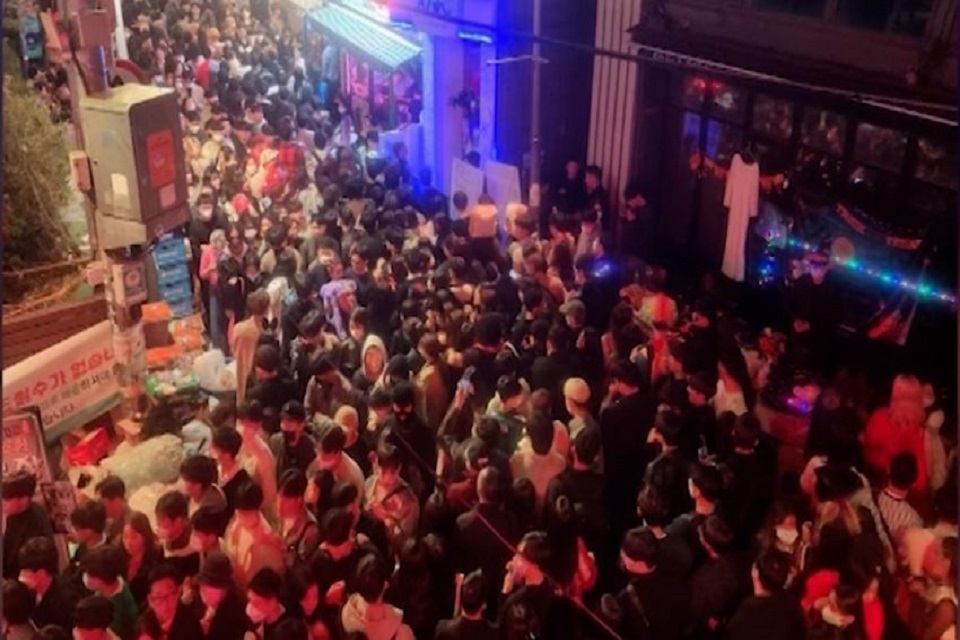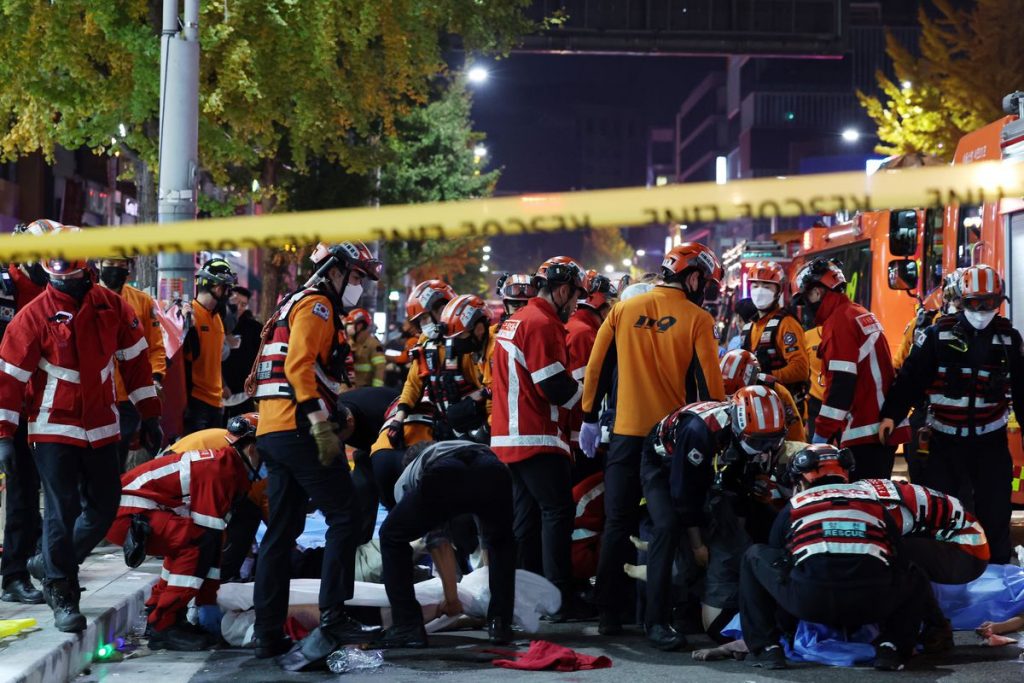About 150 people were crushed to death during Helloween festivities
According to the city’s fire service, at least 149 people were killed and another 150 were injured after being crushed in a big Halloween throng in Seoul on Saturday night, in one of the bloodiest peacetime catastrophes in South Korea’s recent history.
The population surge occurred amid one of the most rowdy events of the year in the nation’s capital, as as many as 100,000 people crowded the tiny streets of the Itaewon nightlife district Saturday evening for Halloween festivities, according to local news agencies.
As of 16.00 Sunday, Kim Geun-jin, a division commander for the Seoul police, said that nothing could be disclosed regarding the incident’s cause since “identifying the victims is our first concern.” “Our forensic teams are working on identifying casualties and gathering evidence from the scene,” he continued.

The disturbance started in a short lane just outside Itaewon metro station’s exit 2, along a series of bars that featured, among others, Oasis Bar & Cafe, Gathering, and Ravo. An upset spectator who observed the occurrence stated he saw limp bodies on the roadway. “I wish I hadn’t done it, but I did,” he said. “It broke my heart.”
People, police officers, and emergency medical personnel were photographed doing cardiopulmonary resuscitation on persons lying on the street. According to Choi Seong-beom, chief of Seoul’s Yongsan fire department, at least 101 of the deceased were brought to local hospitals, while 45 were taken to a multipurpose gymnasium.
In the decades following the Korean War, Itaewon grew as an area of bars, nightclubs, and businesses catering to American servicemen stationed nearby. It is currently one of Seoul’s most popular areas, noted for its nightlife, youthful clientele, international visitors, and chic restaurants.
Questions regarding crowd management and preparation for the much-publicized event arose almost immediately. Traffic congestion and pedestrian crowds hampered the movements of emergency vehicles coming and exiting from the scene of the deaths.
The disaster is Korea’s worst in peacetime since 2014

The Itaewon tragedy is South Korea’s greatest peacetime disaster since the Sewol ferry sunk off the country’s southwest coast in 2014.
The bulk of the casualties in Itaewon, like the ferry accident, looked to be in their twenties, out for Halloween festivities in the nightlife district.
On April 16, 2014, the Sewol ferry was on its way to Jeju Island for a four-day field trip when it made a fast bend while fighting a strong current and lost its equilibrium. There were 476 passengers on board, including 325 sophomores from Ansan, a city immediately south of Seoul.
As the boat began to sink, the crew continued to urge passengers to remain in their cabins over the intercom. Passengers trapped inside slammed on the windows as the ship sank beneath the waters. That day, about 300 individuals were killed, including 250 students.
While South Koreans rallied behind the victims’ families in the aftermath, unified in their grief, the tragedy later divided the country, with opponents portraying the families’ pursuit of responsibility and adequate compensation as an anti-government campaign. Eight years later, much of the country has gone on, pressed by time and daily life, while Ansan remains in mourning. At least three parents who had lost children in the sinking committed suicide subsequently.
It was eventually revealed that the accident was the result of avarice and carelessness. The Sewol’s owner had built more berths, making the boat top-heavy. It was carrying double the permitted cargo limit on its final journey, having drained the majority of the ballast water that would have helped stabilize it. Experts believe it would have made it to the island if not for the weight.
The hunt for answers to the Sewol disaster took years, and for the families who have lost loved ones in Itaewon, the journey has just just begun.
South Korean authorities are currently investigating the cause of the accident and identifying the fatalities.

